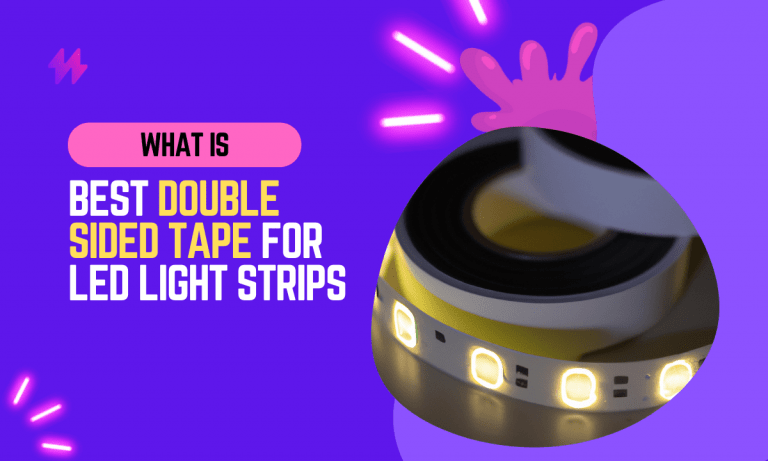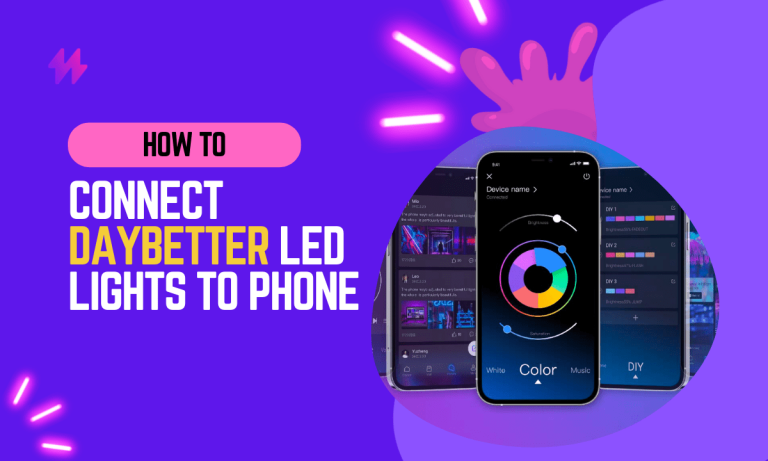How to Choose the Right Voltage for LED Strip Lighting?
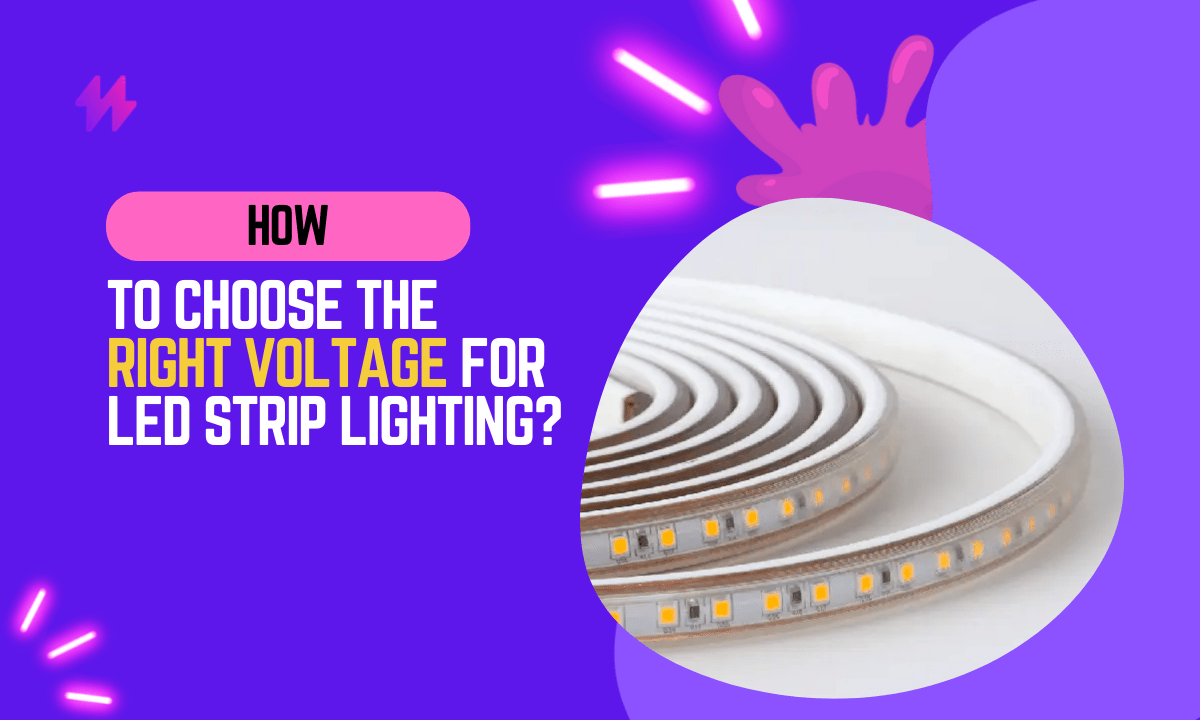
LED strip lights are a popular choice for home lighting, but it can be tricky to choose the right voltage. If you get the wrong voltage, your lights won’t work properly. In this article, I’ll explain what LED strip voltage is and how to choose the right one for your LED Strip lighting.
What is LED strip voltage?
LED strip lights are powered by a direct current (DC) voltage.
The voltage of an LED strip is measured in volts (V). The most common LED strip voltages are 12V, 24V, and 48V.
LED strips are a popular choice for lighting projects, but it’s important to choose the right voltage for your application. The voltage of an LED strip refers to the amount of power it needs to operate, and it’s measured in volts.
Also read: Can LED Strip Lights be Hardwired?
How to choose the Right Voltage for LED Strip Lighting?
The right LED strip voltage for your project depends on the following factors:
- The length of your LED strip
- The number of LEDs per meter
- The power rating of your LED strip
How to Choose LED Strip Voltage?
There are two main types of LED strips: 12V and 24V.
12V LED strips are more common, and they’re typically used for smaller projects, such as under-cabinet lighting or accent lighting.
24V LED strips are more powerful, and they’re typically used for larger projects, such as outdoor lighting or landscape lighting.
Also read: What is LED Strip Voltage Drop?
Factors to Consider When Choosing LED Strip Voltage
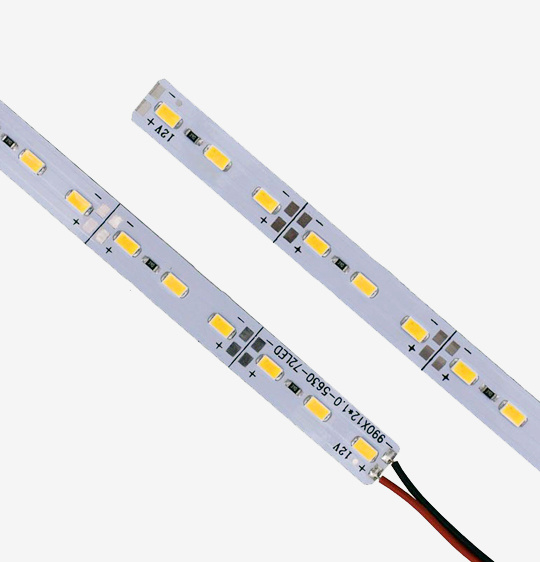
There are a few factors to consider when choosing LED strip voltage.
- Size of your project: If you’re working on a small project, you can probably get away with using a 12V LED strip. However, if you’re working on a larger project, you may need to use a 24V LED strip.
- Power of your LED strip: The power of an LED strip is measured in watts. The higher the wattage, the more power the LED strip needs. You’ll need a higher voltage LED strip if you’re using a high-powered LED strip.
- Distance between your LED strip and the power source: The distance between your LED strip and the power source will also affect the voltage you need. If your LED strip is far from the power source, you’ll need to use a higher-voltage LED strip to ensure the power is delivered properly.
How to Calculate the Voltage for Your LED Strip
To calculate the voltage for your LED strip, you need to know the following information:
- The length of your LED strip
- The number of LEDs per meter
- The power rating of each LED
Once you have this information, you can use the following formula to calculate the voltage:
“`
Voltage = (Length of LED strip * Number of LEDs per meter * Power rating of each LED) / 1,000
“`
For example, if you have a 5-meter LED strip with 30 LEDs per meter and each LED has a power rating of 0.2 watts, the voltage you need is:
“`
Voltage = (5 meters * 30 LEDs per meter * 0.2 watts) / 1,000 = 3 volts
“`
Also read: How to Dim LED Strip Lights with Confidence?
Choosing the Right LED Strip Voltage
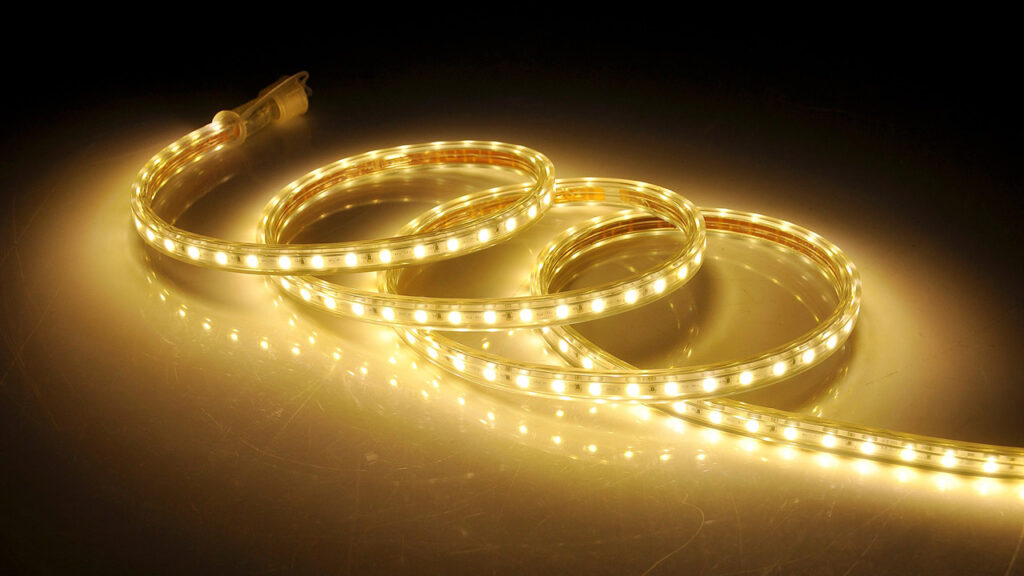
Once you’ve calculated the voltage you need, you can choose the right LED strip for your project. If you’re not sure what voltage you need, it’s always best to err on the side of caution and choose a higher-voltage LED strip.
Here are a few tips for choosing the right LED strip voltage:
- For small projects, such as under-cabinet lighting or accent lighting, a 12V LED strip is usually sufficient.
- For larger projects, such as outdoor lighting or landscape lighting, a 24V LED strip is typically required.
- If you’re working with a high-powered LED strip, you’ll need to use a higher-voltage LED strip.
- If your LED strip is far from the power source, you’ll need to use a higher-voltage LED strip to ensure the power is delivered properly.
FAQs
What is the difference between 12V and 24V LED strips?
12V and 24V LED strips are the two most common types of LED strips. The main difference between them is the voltage they operate at. 12V LED strips are more common for indoor use, while 24V LED strips are more common for outdoor use.
How can I convert the voltage of my LED strip?
If you need to convert the voltage of your LED strip, you can use a voltage converter. Voltage converters are available in a variety of sizes and power ratings.
What are the safety risks of using LED strips?
LED strips can be dangerous if they are not used properly. Some of the safety risks associated with LED strips include:
- Electrical shock
- Fire
- Eye damage
- Skin irritation
It is important to read and understand the safety instructions for your LED strip before you install it.
Conclusion
In conclusion, selecting the right voltage for LED strip lighting is pivotal to both the efficiency and safety of the installation. Typically, LED strips are available in low voltage variants such as 12V or 24V, and sometimes higher voltages like 120V or 240V, each serving different purposes and environments. Low voltage LED strips, such as 12V and 24V, are predominantly used for residential and light commercial settings due to their energy efficiency and lower risk of electrical hazards. These require a transformer to step down the voltage from the main power supply, ensuring safe and stable operation. On the other hand, higher voltage LED strips are suitable for larger installations where longer strip lengths are needed without the risk of voltage drop, which can cause uneven lighting and reduced efficiency.
Moreover, when choosing the voltage for LED strip lighting, it is essential to consider the specific requirements of the space and the technical capabilities of the lighting setup. For example, a 12V LED strip may be ideal for shorter runs under a kitchen cabinet, where simplicity and safety are paramount. In contrast, a 24V strip might be better suited for larger areas like commercial spaces, where longer runs are necessary, and the slightly higher voltage reduces the occurrence of voltage drops along the strip. Additionally, the choice between DC and AC powered strips should be influenced by the installation environment and the accessibility of compatible power sources. By understanding these nuances and selecting the appropriate voltage, users can optimize the performance and longevity of their LED strip lights, achieving not only an aesthetically pleasing outcome but also an energy-efficient and safe lighting solution.
Additional Resources
[How to Choose the Right LED Strip Voltage](https://www.ledsupply.com/blog/how-to-choose-the-right-led-strip-voltage/)
[LED Strip Voltage Chart](https://www.digikey.com/en/resources/conversion-calculators/led-strip-voltage-chart)
[LED Strip Voltage Calculator](https://www.rapidled.com/led-strip-voltage-calculator/)



